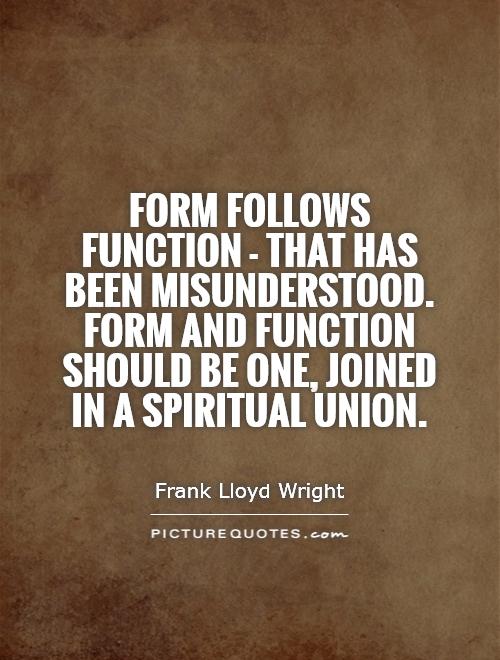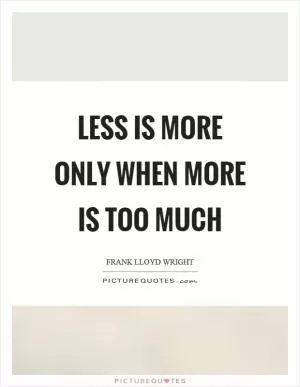Form follows function - that has been misunderstood. Form and function should be one, joined in a spiritual union

Form follows function - that has been misunderstood. Form and function should be one, joined in a spiritual union
Frank Lloyd Wright, one of the most influential architects of the 20th century, is often credited with coining the phrase "form follows function." However, Wright himself later clarified that this statement had been misunderstood. He believed that form and function should not be separate entities, but rather should be united in a spiritual union.Wright's architectural philosophy was deeply rooted in the idea that buildings should be designed to serve a specific purpose, but that this purpose should also be reflected in the form of the building itself. He believed that the function of a building should dictate its form, and that the two should work together harmoniously to create a unified whole.
For Wright, architecture was not just about creating functional spaces, but about creating spaces that were beautiful, inspiring, and spiritually uplifting. He believed that the design of a building could have a profound impact on the people who inhabited it, and that a well-designed building could enhance the quality of life for its occupants.
Wright's belief in the unity of form and function can be seen in many of his most famous works, such as Fallingwater and the Guggenheim Museum. In these buildings, the form of the structure is not just a reflection of its function, but is an integral part of the overall design. The buildings themselves are works of art, with every detail carefully considered to create a sense of harmony and balance.












 Friendship Quotes
Friendship Quotes Love Quotes
Love Quotes Life Quotes
Life Quotes Funny Quotes
Funny Quotes Motivational Quotes
Motivational Quotes Inspirational Quotes
Inspirational Quotes